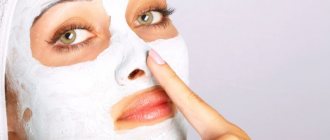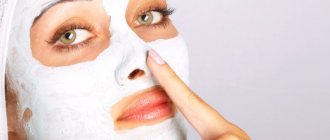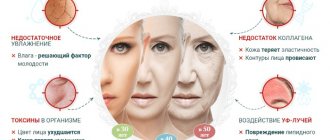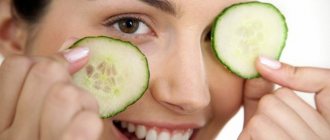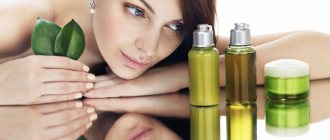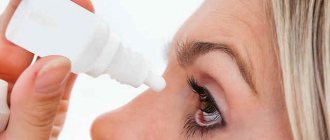A short excursion into the past
Not so long ago, the use of so-called “golden” threads, which fix soft tissues in the desired position, was considered an advanced, revolutionary rejuvenation technique. Although in fact there was no talk about gold other than the name, the cleverly thought-out PR move had its effect.
Today, a more modern variation of this procedure has already appeared in the arsenal of plastic surgeons and cosmetologists, which provides not only a lifting effect, but also all the benefits of mesotherapy.
The “3D Mesothreads” method of face lifting and wrinkle elimination came to us from South Korea - it was originally developed specifically for the thin and sensitive skin of women in East Asia, but, thanks to its high efficiency and low trauma compared to surgical techniques, it instantly gained popularity in Europe among both women and men.
What do mesothreads consist of and how do they work:
Mesothreads are threads made of absorbable materials (caprolactone, polydioxanone, polylactic acid), attached to the finest needles made of high-quality steel, or located inside a guide cannula.
When placing threads, two main effects :
Mechanical lifting is observed immediately upon installation: the soft tissues of the face and body are tightened and fixed in the desired position. At the same time, both age-related wrinkles (which have formed over time) and structural ones (which are a feature of the facial structure) are equally effectively eliminated.
Further, under the influence of the skin’s own enzymes, the threads gradually dissolve. The period of biodegradation of threads is different and depends on the materials from which they are made, from 4 months to one and a half years. And in their place, a kind of connective tissue frame is formed, which maintains the result of the tightening for 2-4 years. After this period, a repeat procedure will be required.
Histological lifting is rejuvenation at the cellular level, as after conventional mesotherapy (hence the name) - during the resorption process, they release biologically active substances that activate skin cells to produce their own collagen and elastin, improve tissue oxygenation and, as a result, skin turgor and elasticity increase, the skin begins to “glow from within.”
Important!
Not all types of threads can provide the effect of mechanical lifting.
Let's find out why? If you think that any thread can give lifting, then you are mistaken.
There are true lifting threads in the lines of threads Dermafil Happy Lift, Aptos, etc. They are distinguished by the ability to create using virtual loops - reference points - thread fixation points, so the thread does not “float” freely in the tissues, but is firmly fixed in them, which allows maximum effect of mechanical lifting. In addition, the advantage of the threads is their thickness and the strength of the notches. Each notch is attached to the thread separately, and is not “cut” from the thickness of the thread itself, thereby thinning it. Thanks to this, the notches firmly “cling” to the fabrics, preventing them from “slipping” to the bottom.
Reinforcing threads are threads that do not provide lifting, but only help create a strong frame in the skin and improve its quality. These include linear mesothreads - the threads with which the “era” of thread lifting began. As well as their various derivatives - braids, springs and so on - due to the fact that the threads are thick and have an “uneven” texture - they give a more pronounced reinforcement effect.
Kogi - despite the fact that they are called lifting threads, they are not classified as such. They can be called pseudo-lifting - thanks to the notches, they allow you to “pick up” tissues and move them in the desired direction. The “pseudo-lifting” effect is observed for 1-2 months due to the presence of post-traumatic edema and slight tissue movement. But when the tissue is completely restored, the lifting effect “evaporates.” And here’s why - these threads do not have fixation points in the tissues, they are freely located in them and the second important factor is “weak notches”, they are carved on the thread itself, like “notches on a tree trunk”, which significantly reduces their ability to firmly fix fabric and, moreover, the thread itself becomes thinner and less durable. As a result, fabrics, especially heavy ones, happily “slide” to the bottom.
The advantage of these threads is that, thanks to the notches, they cause greater tissue trauma compared to monofilaments, and, accordingly, a greater tissue response. Therefore, the effect of the so-called vector lifting is “A+”.
Important!
There are a number of techniques used by specialists at our center that make it possible to prolong and make the mechanical lifting effect more durable even with this type of thread. True, a significant disadvantage of this is the lengthening of the rehabilitation period.
Tatyana Grekova, hairdresser-stylist
About goals...
I am a supporter of the idea that it is easier to prevent any age-related problem than to correct it later. My doctor Olga Ibrakova from the Tori clinic and I already tried 3D lifting about four years ago. Then they put two threads on my cheekbones, and I was pleased with the result. This time we decided to install threads over the entire face to prevent the manifestations of ptosis - age-related sagging of tissues.
About the means...
Tatyana chose for me Aptos Excellence Visage absorbable threads made of caprolac containing lactic acid. The peculiarity of these threads is that their entire surface is covered with notches, which allows them to be tightly fixed in the tissues. Another argument in favor of these threads is that their resorption period is quite long, about two years. In total, I was given 35 threads - in the upper, lower part of the face and in the neck area.
About feelings...
I deliberately refused anesthesia because I trusted the doctor’s hands. In my opinion, the more elaborately the thread is placed, the easier the procedure will be. In my case it was easy. I arrived for the operation at three o’clock, and at five I already had a client with whom I worked until nine in the evening: I gave her a haircut and coloring.
About restoration...
I warned my man in advance about a major aesthetic procedure, after which recovery may be required. When I came home with a little post-operative swelling, he didn’t even raise an eyebrow. When you inject a thick drug into the lips, rehabilitation is much more difficult: bruises appear, everything pulsates and bursts. There is a slight swelling here - that’s all. After the procedure, for ten days I smeared my face with sea buckthorn oil, which always helps me, and wrapped it with an elastic bandage at night. I can say that it didn’t even stop me from having sex.
About the result...
A couple of weeks later there was a funny incident. I received a courier with hair cosmetics that I needed for work. A young man of about 25. Working moment: he gave me the goods, I gave him the money. It was unusual that in the evening he asked me out on a date! Apparently, it didn’t occur to him that I might have a daughter his age.
Why is there no effect?
More than once in my practice I have heard that inserting threads has no effect. This has no effect, and simply in pursuit of making the procedure cheaper, some doctors use threads from the “just to deliver” category. And unfortunately, in most cases, it is you, our dear patients, who provoke them to this, wanting to do the procedure for “pennies”
Important!
The thread lifting procedure, especially with true lifting threads Dermafil Happy Lift, Aptos, etc., will not be cheap. Therefore, you need to understand for yourself - either I put threads or I don’t.
Let's summarize the results of incorrect use of threads, which will not have a lifting effect:
- Using reinforcing threads to achieve lifting
- Using an insufficient number of threads for lifting purposes. It is especially touching when they place one or two threads on each side. And in the best case, it’s good that these will be so-called kogi, but sometimes they are just monofilaments. In this case we are talking only about pseudo-lifting threads
- Incorrect installation of threads - either too deep or superficial. Incorrectly selected reference points when installing lifting threads.
- Incorrectly selected patients - patients with stage III or IV gravitational ptosis are unlikely to be satisfied with the procedure.
Use of anesthesia
Thread lifting is performed under local anesthesia. If barbed threads are used, infiltration anesthesia of the area may be required. In this case, dental painkillers are first injected into the area of intended correction. When lifting with smooth threads (for example, mesothreads), a special anesthetic cream is applied to the surface of the correction area.
Minor pain may occur after the anesthesia wears off, but this pain is quite tolerable. Patients with a low sensitivity threshold are recommended to take painkillers in the first few days.
At what age should threads be used?
This is perhaps the most frequently asked question.
From the point of view of the law - from 18 years of age. And from an aesthetics point of view, the first indications for thread lifting most often appear around the age of 30: wrinkles deepen, the oval of the face “floats”, and the skin loses firmness and elasticity. However, these processes are strictly individual for each person, and the time for correction can come either at 25 or 40 years.
The concept that thread lifting is indicated only when the face loses its youthful oval and the hated jowls begin to bother everyone, the nasolabial and labio-mental folds are deeply formed, and the face becomes “square” is long outdated.
You need to understand that thread lifting is not plastic surgery, we do not cut off the skin, but only move the tissue, due to which the skin contracts and activates histological lifting.
It takes time to start all these processes.
In this regard, the result should be assessed no earlier than six months later, or better yet, a year later.
Therefore, if you are over 50 and finally decided that it’s time to get threads, and that after that you will look 30, then you are too late. We will not say that there will be no result, it will be, but not what you expect.
In threadlifting, as in many other procedures, there is such a thing as the quality of the source material. The better it is, the more pronounced the result.
Therefore, as soon as the first signs of gravitational ptosis appear or do not appear at all, but you are already over 25, it is time to think about placing threads. This is how you will prolong your youth for many years.
Indications for use
Non-absorbable Spring Thread is recommended for ages 35 to 75 years. Main indications for use:
- sagging chin, “double chin”
- loose skin of the face, neck, décolleté
- facial asymmetry
- "swollen" cheeks
- wrinkles on the face and neck
Note that with the help of these threads you can tighten not only your face and neck. Spring Trad showed excellent lifting results in the following areas:
- breast
- forearms
- stomach
- buttocks
- hips
Rehabilitation period.
Rehabilitation depends on the type, quantity and technique of inserting the selected threads, as well as the goals we are pursuing.
It may not exist at all, just a couple of small bruises that do not affect the quality of life, or it can last from 2 weeks to several months. During this time, it is only necessary to protect the treated area from sudden and intense movements, in particular, to refrain from active facial expressions, and chew slowly and carefully while eating. Avoid visiting baths, saunas, gyms, and solariums. Also, for a period of up to 2 months, it is advisable to exclude all manual procedures in the area where the threads are installed.
Important!
Do not self-medicate!
During this period, you should follow all the recommendations given to you INDIVIDUALLY and introduce certain restrictions into your usual lifestyle, about which you will be very carefully informed before the thread lifting procedure.
Which category of patients do we recommend thread lifting?
We recommend thread lifting to “advanced” users of cosmetic procedures, those who do not faint (to our surprise, there are such patients) at the word “Threads” and are ready for the rehabilitation period. For those who do not want to lie on the operating table, or understand that the number of braces is limited, so they are in no hurry to do the first one.
Happy lift threads are an ideal means of preserving youth for those who avoid or postpone serious surgical interventions.
The procedure occupies an intermediate position between cosmetology and plastic surgery. Allows you to achieve pronounced correction results; no lengthy preparation is required, and the procedure itself will take no more than an hour. The effect of the procedure is visible immediately, intensifies within 3 months and lasts from 1 to 3 years.
Happy lift is used for:
- oval face lift;
- to eliminate nasolabial folds;
- to align the contour of the lower jaw;
- for eyebrow lifting;
- to eliminate wrinkles on the neck;
- against early skin photoaging;
- to give expressiveness and relief to a “flat” face;
- for the correction of asymmetries - unilateral ptosis of the eyebrows and face;
- in medicine - for aesthetic correction of facial nerve paresis, etc.;
- thickening of the skin of various parts of the body.
H appy Lift threads made of and what are the advantages ?
- The most effective type of non-surgical lifting.
- Allows you not just to tighten, but to truly model 3D volumes of the face.
- Happy Lift threads are Italian threads. They have the CE safety mark. This means that the manufacturer guarantees the quality of the product and high production standards, including sterilization and packaging. Approved for use in the Russian Federation
- Thanks to the patented technology of applying notches, each notch is applied to the thread separately, due to which the thread has high strength and is perfectly fixed in the tissues, providing pronounced tissue movement and a long-lasting correction result
- They consist of caprolactone coated with polylactic acid on top. Caprolactone has been used in medicine for more than 50 years as a suture material. It is inert and safe.
- Polylactic acid in the threads intensively moisturizes the skin and significantly improves its quality. After installation of the threads, the skin is tightened, thickened, smoothed and takes on a radiant appearance.
- Does not require anesthesia. Local anesthesia is used for the procedure.
- Biodegradability. 12-18 months after installation, the threads are completely absorbed, and no foreign substance remains in the tissues.
- The soft fibrous capsule, which during this time is formed in place of the thread, maintains the facial tissues in a youthful position for another 2 years.
Introduced into the skin, these threads slow down the passage of time by 3-5 years, especially in combination with other cosmetological techniques, such as mesotherapy, biorevitalization, etc.
The best Kogi thread manufacturers: review and prices
Kogi threads for face lifting from Korean manufacturers are presented on the domestic market of cosmetology services. They differ in quality, price, and application features. The cost of the service depends on the manufacturer, region, specific clinic, and qualifications of the plastic surgeon. Prices for Kogi threads vary from 2000 to 3000 rubles. for one thread.
Before turning to specialists for the procedure for installing Kogi mesothreads, it is worth familiarizing yourself with the different types of Kogi threads from various manufacturing companies. You need to be confident in the experience and qualifications of the doctor to whom you give money and trust the most precious things - health and beauty.
To do this, you need to read the reviews of patients who have previously used the services of this doctor, about the doctor himself and about the clinic as a whole. Today, every reputable and competitive clinic has its own website on the Internet, which is constantly updated and accessible to every user.
Korean threads under the Omega brand
The most popular lifting mesothreads in Russia today remain the Omega brand from the Korean manufacturer OV World. This company was the first in Korea to receive a patent for the production of kogi threads from the monofilament suture material polydioxanone.
Mesothreads under the Omega trademark are available in the following variations:
| Omega VL Original (140 mm) | Omega VL Spike | Little Omega VL |
| the notches are directed in one direction | the notches are arranged in a spiral around the thread body, directed in different directions | the threads are short, the teeth are multidirectional |
| minimally invasive facial skin tightening along natural lifting vectors | for more reliable tissue fixation and long-lasting results | delicate lifting of the nasolabial area, drooping eyelids and eyebrows |
The best effect is obtained by using these three types of threads in combination.
Beauty' lift V Line
Beaute lift V-LINE threads are manufactured in Korea, puncture needles are sharpened and polished using laser technology in Japan. The threads undergo additional polishing and contain only natural material, polydioxanone, which is completely absorbable within six months.
When it disintegrates, it is replaced by connective tissue, which further strengthens the facial frame. The versatility of this brand of threads lies in the variety of their lengths and diameters, this allows them to be used in various combinations to achieve the best effect.
EVE COG
EVE COG lifting threads from Meditronic DongJun allow for high-quality lifting, reinforcement of the facial oval frame and improve the relief and structure of the skin. EVE COG threads differ from similar products from other manufacturers, first of all, in the high-quality steel (SUS304) from which the needle is made.
The puncture needle is very elastic and flexible, allowing it to easily penetrate the deep, middle and upper layers of the subcutaneous epidermis, and perform manipulations up and down and left and right.
The thread is made of high quality polydioxanone, the thread is thick enough, the needle is long, allowing you to hold the thread comfortably. Laser sharpened needle. The thread is additionally polished, which avoids the “sawing” effect when the thread passes through the fabric.
VERSATILE Uni
Ultra-strong threads with notches arranged in a spiral are the latest development in aesthetic medicine. The length of the threads is 50-60 mm. The design of the thread in the shape of a spiral allows it, after tension, to return to its original position, tightening the skin and maintaining lively natural facial expressions. Used to correct the nasolabial triangle, eliminate the network of wrinkles in the eye and eyelid areas.
Types of Happy Lift threads that we use in our work.
MesoСogs is a thread for improving the quality of skin not only of the face, but also of the body. A 50 cm long thread is actively used to eliminate sagging neck, décolleté, abdomen, inner surface of the arms and thighs. The skin becomes thicker, color improves, and blood supply increases.
Free Floating – translated from English as “free floating”, that is, without a fixation point. These are threads with converging notches that are inserted into the skin using a guide needle. They are used to reinforce the entire face or individual parts of it, as well as to eliminate sagging skin on any part of the body. They do not have a pronounced lifting effect.
Double Needle is a thread attached at both ends to the ends of two needles. Allows you to create a strong fixation point and move tissue to this point. It is a true lifting thread. Depending on the area of installation, we achieve the elimination of various aesthetic defects: eyebrow lifting, smoothing out “wrinkles of sadness” and nasolabial folds, eliminating a “double chin” and jowls, recreating a youthful oval of the face.
Boca thread -. The first thread for correction of the oral area. Threads with diverging notches, introduced into the skin using a guide needle, allow you to create a clear contour of the lips, expand their corners and also eliminate purse-string wrinkles.
Reinforcing and pseudo-lifting mesothreads.
So, their main differences from true lifting threads are as follows:
Threads consisting of polydiaxonone (PDO)
- Polydioxanone is a hypoallergenic, non-toxic, pyrogen-free surgical suture material that causes a very weak tissue reaction during resorption.
- The high rate of biodegradation of mesothreads ensures mild neocollagenosis without compromising microcirculation and tissue vascularization in the installation area. After 180-240 days after the procedure, mesothreads completely biodegrade, breaking down into carbon dioxide and water familiar to the body (100% biocompatibility with tissues). In the area where the mesothread is installed, a slight compaction of connective tissue remains, which continues to perform a “frame” function for 12-18 months.
Due to such a mild and short-lasting effect, we cannot obtain a true lifting effect.
Effects when installing mesothreads:
- biostimulation (biorevitalization);
- reinforcement (remodeling);
- vector lifting.
What complications and side effects occur with thread lifting?
This question worries everyone who has decided to undergo a thread lifting procedure.
Allergic reactions - polydiaxonone and caprolactone have been used in medicine for a very long time as biodegradable suture material. Therefore, when using them, there are practically no allergic reactions.
Contouring – In patients with thin skin, even if we place the threads correctly, the thread may contour. We warn you about this in advance, and it would be advisable for such patients to refuse the procedure.
Hypertension and folds - excessive lifting of soft tissues leads to an unnatural, “overstretched” appearance, especially in the lower third of the face. As a rule, it goes away on its own after 7-10 days from the procedure. The reason for excessive lifting is the presence of skin folds after the procedure. These two undesirable effects will always be present if we want to get the maximum effect from the procedure and achieve a lasting effect due to retraction (movement and contraction) of the skin. We don’t cut off the skin, so it has to “go somewhere” and this happens precisely as a result of the formation of skin folds. The folds will last on your face from 2 weeks to a couple of months, depending on your goals.
Therefore, the formation of these effects is one of the special tightening techniques and is discussed before the procedure.
If you “catastrophically” do not want wrinkles after the procedure and have an overstretched face, then you can do without this, but do not expect a pronounced and lasting lifting effect.
Hematomas, swelling and pain in the places where the threads are inserted are absolutely normal. Thread lifting is not a facial massage, but an invasive, traumatic procedure. All these phenomena do not threaten your health, do not bring significant discomfort, but of course they spoil your appearance.
They take place within two weeks. For some it is earlier, but for others the time is longer - it depends on the individual characteristics of the body and how correctly you follow the recommendations given to you
Purulent inflammatory processes in the area where the threads are installed occur as a result of infection entering the puncture sites. This is possible if the rules of asepsis and antisepsis are violated, but much more often happens due to the fact that the patient does not behave carefully enough in the first days after the procedure. It is treated with an individually selected course of antibiotics.
Retraction along the thread - occurs as a result of surface installation of threads. The level of placement of the threads is the border of the dermis and subcutaneous fat. If the thread is located intradermally, then the result is skin retraction—the formation of so-called “traces” of threads. In this case, the thread will have to be removed, and the sooner the better, so as not to complicate your life in the future by delaying this complication.
Capsular contracture (like the one that can occur in the breast, around the implant), allegedly forming around the threads - a “horror story” spread by incompetent doctors or patients (like the one that can occur in the chest, around the implant) has no basis in reality grounds. This is confirmed not only by theory, but also by practice: surgeons who performed facelift operations on patients who had previously installed threads for themselves, and had a chance to see the situation from the inside, testify to the absence of any hint of a fibrous capsule.
How does the thread facelift procedure work?
Thread reinforcement includes the following steps:
- Preparation. The procedure is carried out in a cosmetology salon. Before implantation, the specialist cleanses the skin of decorative cosmetics and impurities, then treats the skin with a bactericidal solution that destroys pathogenic microflora that contribute to infection and inflammation.
- Anesthesia. For pain relief, a local anesthetic is mainly used, but sometimes the cosmetologist uses general anesthesia.
- Marking of injection points. The cosmetologist, using a special marker, marks in advance the points where the threads will be inserted.
- Fiber implantation. As soon as the anesthesia takes effect, the specialist, using a special needle or cannula, makes a micro-puncture, implanting threads to a certain depth. The fibers are fixed in the required position and stretched in the direction opposite to the needle.
- Repeated treatment with anesthetic. At the end of the procedure, the insertion sites of the cannulas or needles are re-treated with a bactericidal solution.
- Applying a soothing compress. At the very end, the cosmetologist applies a cold compress to the treatment areas, which relieves inflammation, swelling and prevents the formation of bruises.
The main factors excluding thread lifting:
The first and main contraindication is the patient’s overestimated attitude towards the procedure, the second is the lack of psychological attitude to competently survive the rehabilitation period
Well, and of course such general contraindications as:
- pregnancy and lactation;
- the presence of previously installed implants or non-absorbable materials (threads, gels) in the correction area;
- tendency to form keloid and hypertrophic scars;
- feverish state, increased body temperature;
- inflammatory processes on the skin and under it in the correction area, including herpetic rashes;
- chronic diseases in the acute stage;
- cancer and autoimmune diseases;
- diabetes;
- taking anticoagulants or bleeding disorders;
- epilepsy;
- psychical deviations;
- age up to 18 years.
